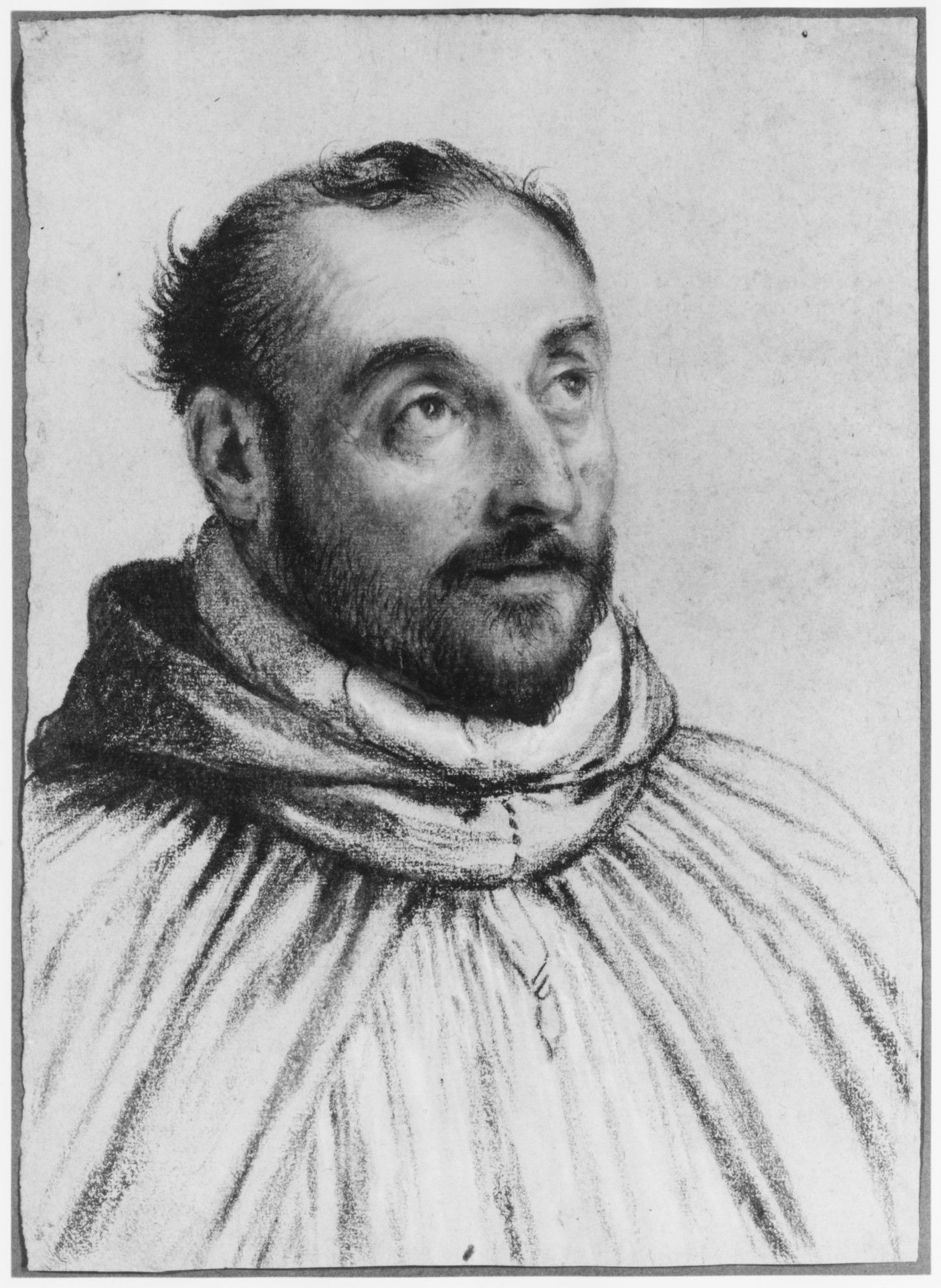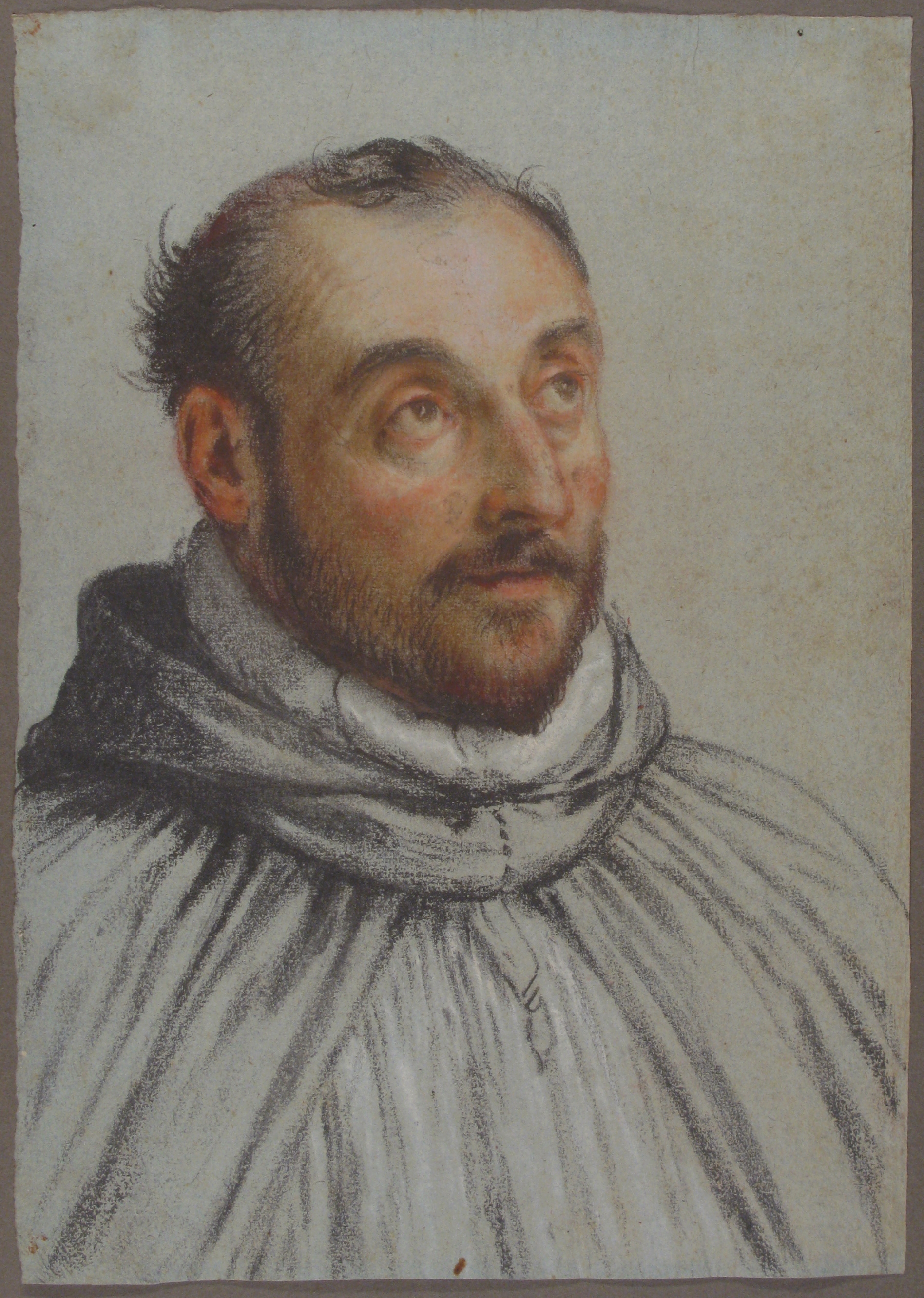Bust-Length Portrait of an Ecclesiastic
Carletto Caliari Italian
Not on view
This portrait shows the sitter, a middle-aged cleric with aquiline nose, short beard and slightly balding, with his intent gaze directed to the upper right (heavenward), to denote his spiritual disposition. The artist was the talented, second-born son of the great painter, Paolo Veronese (1528-1588). Carletto Caliari was a close assistant of his father especially in the late years of the great master; in Venice painting was conducted as a family business.
The present drawing bears a very close resemblance to the main saint in Paolo Veronese's late canvas of the Conversion of Saint Pantaleon (San Pantaleone, Venice), begun in 1587, and so the drawing was probably inspired by it. The style and colored chalk technique of the portrait reveal the marked influence of Jacopo Bassano and his family. Along with Leandro Bassano, Carletto had worked in the 1580's in Jacopo Bassano's workshop.
The painter of this portrait was the talented, second-born son of the celebrated painter Paolo Veronese (1528-1588). Carletto Caliari was a close assistant of his father's, especially in the late years of the great master; in Venice, painting was conducted as a family business. The present drawing bears a very close resemblance to the main saint in Veronese's late canvas The Conversion of Saint Pantaleon (San Pantaleone, Venice), begun in 1587, so the drawing was probably inspired by it. The style and the colored-chalk technique of the portrait reveal the marked influence of Jacopo Bassano and his family. Along with Leandro Bassano, Carletto had worked in Jacopo Bassano's workshop in the 1580s.
(C.C.B.)
Due to rights restrictions, this image cannot be enlarged, viewed at full screen, or downloaded.
This artwork is meant to be viewed from right to left. Scroll left to view more.





